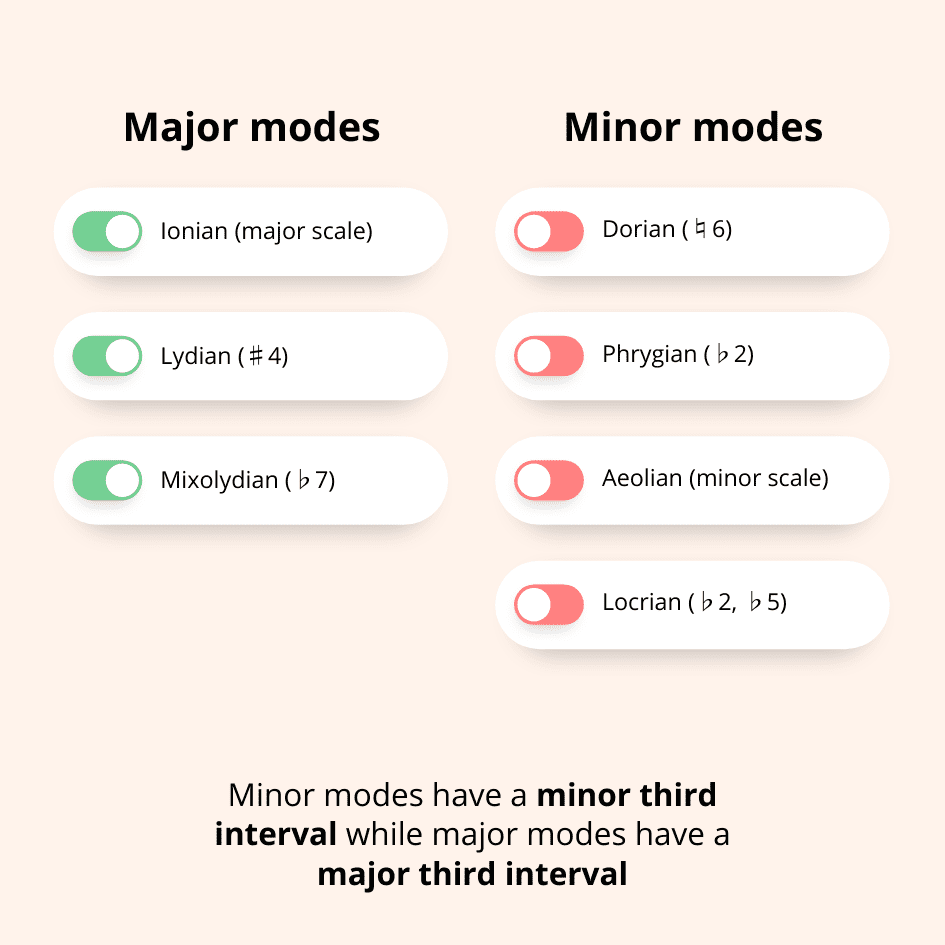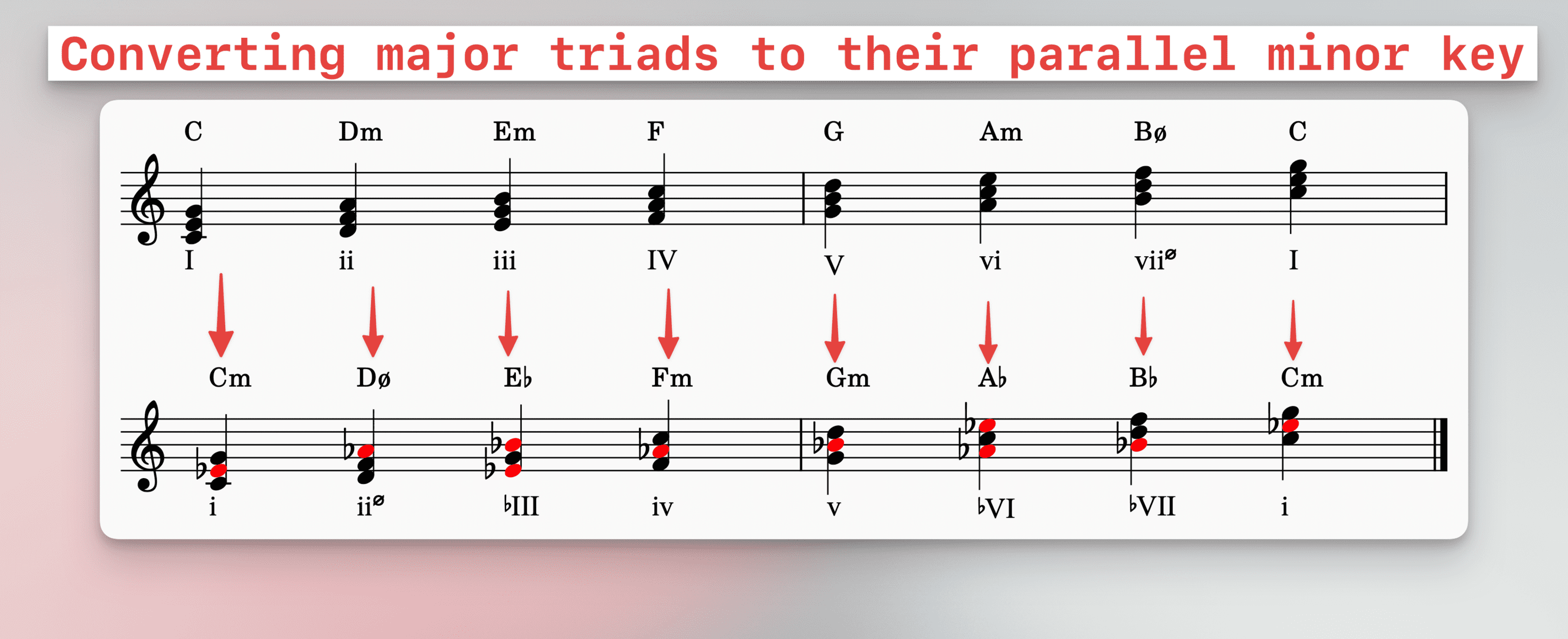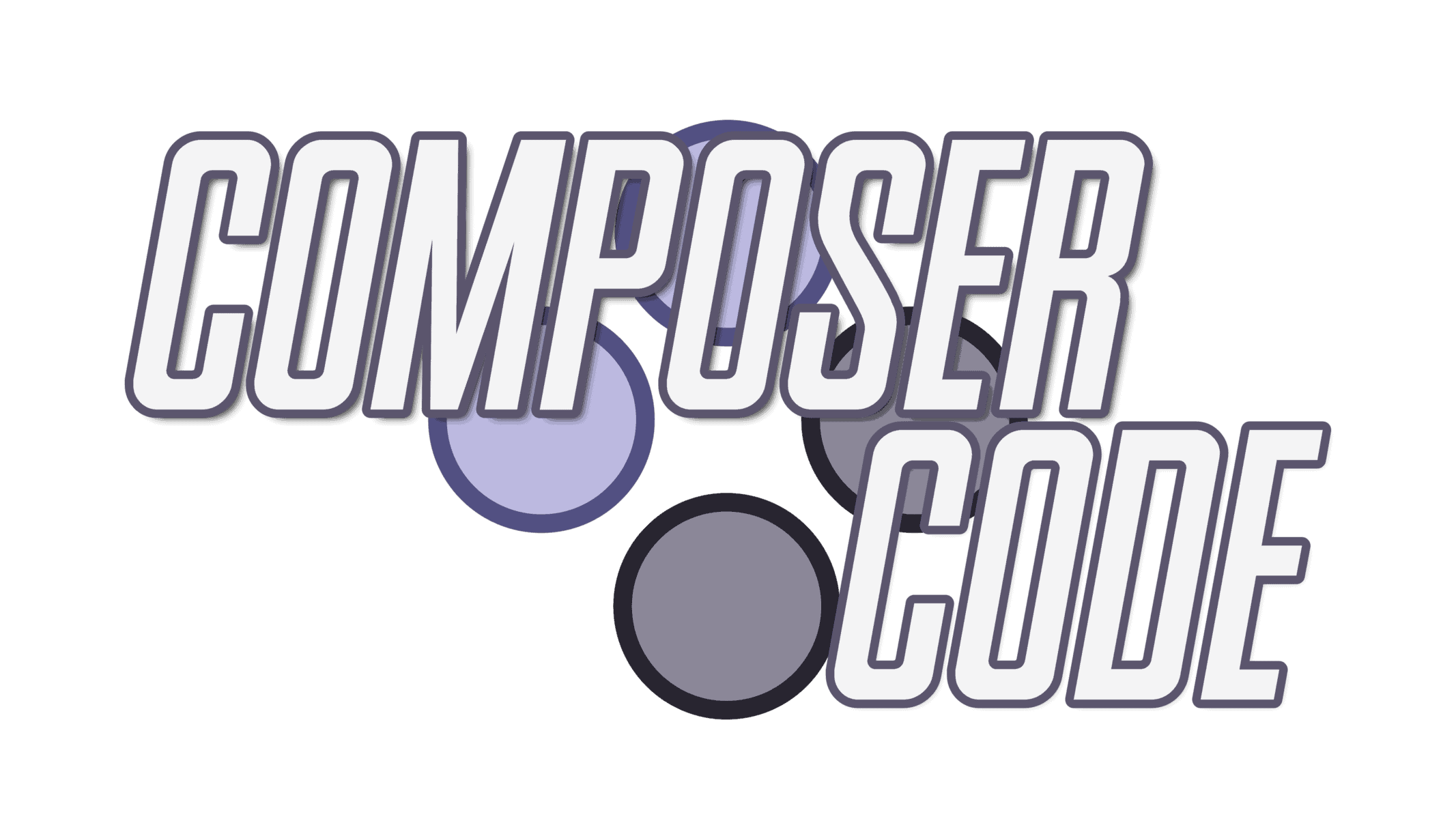
The Aeolian Mode is one of the most often-used modes in Western music and is also known as the minor scale.
It is a seven-note scale that can be built using the following formula of whole steps and half steps:
Whole, Half, Whole, Whole, Half, Whole, Whole
This scale can be used to create a variety of melodic and harmonic patterns.
Aeolian Mode is commonly used in folk music as well as many classical compositions and contemporary pop songs. It is the go-to “sad” key for pretty much all music.
It’s also a mainstay in rock n’ roll, which uses minor keys often infused with the Blues scale.
Overall, the Aeolian Mode is versatile and effective when used to create musical compositions. It can be used to evoke a range of emotions and can fit into many different genres.
In this post, we’ll talk about:
- What the Aeolian mode is and how to use it
- How you can leverage the Aeolian mode even when you’re in a major key (borrowed chords)
- Examples of the Aeolian mode across multiple genres and mediums
This is gonna be fun. But first, let’s do a quick review of modes as a whole.
Table of Contents
What are musical modes and why are they important?
Musical modes are particular ways to organize musical pitches, not unlike a scale.
Modes are important because they can help us break out of the “major is happy” and “minor is sad” clichés, and allow us to express more nuanced emotions in our music.
In the Western classical tradition, there are seven primary modes, often referred to as diatonic modes:
Many folks will describe modes as just “major scales with different starting notes.” For example, if you take the C major scale…
C – D – E – F – G – A – B – C
…and shift the starting note (tonic) to the sixth degree, you would construct a scale in the A Aeolian mode, aka the natural minor scale:
A – B – C – D – E – F – G – A
It’s all the same notes, just shifted over six degrees.
This is all well and good, but I don’t think it lends itself well to really learning and internalizing modes (or transposing modes into any other key besides C, because that’s always the one used in these examples).
A better way is to think of modes in two camps: major modes and minor modes.
Major modes are all the modes with a major third, namely:
- Ionian (classic major scale)
- Lydian
- Mixolydian
While minor modes are all the modes with a minor third:
You can think of each mode as a twist or variation of the standard major or minor scale. In our case, we’re focusing on the Aeolian mode, which is technically just a natural minor scale.

What is the Aeolian mode?
The Aeolian mode, as we’ve just described, is a natural minor scale. But how do you construct a natural minor scale?
As mentioned in the introduction, the formula for building out the Aeolian mode is:
Whole Step, Half Step, Whole Step, Whole Step, Half Step, Whole Step, Whole Step
The great thing about this formula is that it works no matter what note you start on. For example, let’s say we want to build the F Aeolian mode:
- First, we start off with F
- Then, we move a whole step to G
- Then, a half step to A♭
- Then, a whole step to B♭
- Then, another whole step to C
- Then, another half step to D♭
- Then, another whole step to E♭
- And finally, another whole step back to F
Notice how we count each pitch in sequential letters.

Meaning, we don’t say “G to G#”, but rather “G to A♭.” Technically both notes sound the same, but this method is a best practice to avoid confusion and create clear musical notation.
Now, another way to think about building out a minor scale is to think of it as a major scale but with a flattened third, flattened sixth, and flattened seventh.
So, to put a finer point on it, here is a C major scale (which we could call an Ionian mode). It’s just your standard, A-grade, farm-raised, gluten-free major scale:

C – D – E – F – G – A – B – C
Notice the natural third, natural sixth, and natural seventh.
Now, this is our C Aeolian mode (remember, just a C major scale with a flattened third, sixth, and seventh degree):

C – D – E♭ – F – G – A♭ – B♭ – C
That’s a pretty significant difference!
Aeolian harmony and parallel keys
When you take a scale, such as a C major scale, and flip it minor, you’ve now entered the “parallel key.”
The same applies to when you convert a minor key to its parallel major key.
You can sort of think of it as the Shadow Realm or the Upside Down from Stranger Things.
Why is this important?
Because many composers, songwriters, and producers will steal chords from these parallel keys in order to make their harmonies sound more interesting and unpredictable.
These are called “borrowed chords,” and they’re one of the main reasons why it’s so important for musicians to understand both the major and minor versions of whatever key in which they’re playing.
Here are the standard triads built within each scale degree of the C major scale:

Take a look at what happens when we flip our major scale and go to the Upside Down of the parallel minor key.

Note that every single triad is altered when we go to the Aeolian mode or minor scale.
Songwriters and producers: take heed.
This is why it’s so important to understand parallel minor keys: because now you have 7 more chords to choose from to make your pieces more interesting!
Let’s go over what’s happening here:
- The I chord becomes a i chord (C to Cm)
- The ii chord becomes a ii° chord (Dm to D°)
- The iii chord becomes a ♭III chord (Em to E♭)
- The IV chord becomes a iv chord (F to Fm)
- The V chord becomes a v chord (G to Gm)
- The vi chord becomes a ♭VI chord (Am to A♭)
- The vii° chord becomes a ♭VII chord (B° to B♭)
If you’re looking for examples of borrowed chords, you don’t need to go far. It’s actually rare for most songs not to use a borrowed chord of some kind.
For an example in video game music, look no further than the Super Mario victory theme, which I break down in this video (along with many other chord progressions):
Also, the intro of With a Little Help From My Friends by the Beatles features the exact same ♭VII to ♭VII to I progression as the Victory Theme.
Both pieces are lifting the chords from the parallel minor key in order to create this ascending, escalating emotion that ultimately culminates in the I chord.
If you’re interested in learning more about how to create video game music specifically, be sure to check out my hour-long free course on the topic via the form below:
Final thoughts
Let’s summarize what we’ve learned:
Modes are an excellent tool for evoking more complex and nuanced emotions in your music.
The Aeolian mode, otherwise known as the standard minor scale, is a major scale with a flattened third, sixth, and seventh degree.
It’s the go-to “sad” key for music, but it can also be used in major keys through borrowed chords.
The ability to borrow chords from the parallel key is a critical skill for writing interesting and unforgettable harmonies.
Thanks for reading, and be sure to check out my other posts on the musical modes!
